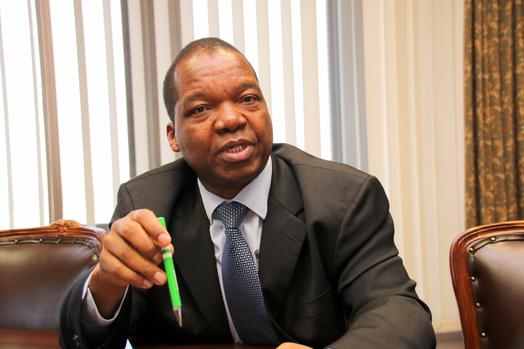THE Reserve Bank of Zimbabwe has missed the deadline government had set for resumption of the interbank market, as that the apex bank refines the initial framework that will govern lending among local banks.
Banking sector sources said yesterday that the Ministry of Finance, Afreximbank and the RBZ agreed that there was need to change the initial framework in which the banks would lend to each other.
This has therefore resulted in the central bank missing the deadline of January 1, 2015, which Finance and Economic Development Minister Patrick Chinamasa had announced in his 2015 budget for the return of the interbank market.
It is understood that while the system has taken longer than expected and twice missing the scheduled restart timelines, it remained on course. Minister Chinamasa said the system would improve confidence in banking.
Sources in the banking sector said the RBZ communicated in November last year that changes would be made to the initial framework designed to govern lending between the banks to ease the liquidity crunch in the sector.
Tight liquidity in the sector and the economy (although coupled with weak governance structures) has seen a number of small banks, including Allied Bank, AfrAsia and Metropolitan struggling to meet their obligations while others like Interfin were put under curatorship.
“They have not yet resumed the interbank market. As you know the interbank was backed by an Afreximbank facility and it appears they no longer wanted to implement the system under the initial format. They indicated in November that they were going to make some changes.
“However, they have not yet shared with us what the changes would be or what they have done so far, but the agreement was between the Reserve Bank, Ministry of Finance and Afreximbank,” an industry source said.
The interbank system will be supported by a $100 million facility from Afreximbank, which provides the security banks require to lend to each other.
Another banking sector source said the requisite documents for the operationalisation of the interbank market were distributed last week for signing by banks before the banks resume lending among themselves.
“The documents to facilitate implementation of the interbank market were circulated for signing last week; it is certainly on course,” the source said.
Efforts to obtain comments from both the Ministry of Finance and Reserve Bank of Zimbabwe were fruitless until the time of going to print yesterday.
The inter-bank market ended following adoption of the multicurrency regime in February 2009. This was due to absence of acceptable collateral as banks with excess liquidity were averse to lending to those experiencing shortages due to credit risk issues associated with those banks.
Unavailability of the RBZ’s Lender of Last Resort function worsened the situation as banks had no fall-back position when they experienced mismatches in their assets and liabilities. The banking sector is segmented, with some banks having surpluses while others have liquidity deficits.
As a result Afreximbank came up with a $100 million facility designed as a collateral swap whereby it will lend its securities to local banks in exchange for eligible collateral. Essentially, the $100 million facility from Afreximbank is in the form of securities, the Afreximbank Trade Debt-backed Securities that will be swapped with assets held by local banks.
Local banks may then use the Afreximbank security to borrow in the local interbank market, helping banks to improve trading among themselves.
The facility will assist in addressing some of the liquidity challenges facing the banking sector by unlocking idle surplus funds in some banks.






